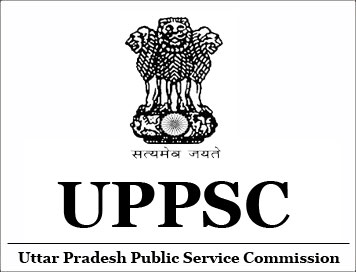
Uttar Pradesh Public Services Commission
UP PCS Solved Paper - UP PCS 2011
1. Gautam Buddha had attained Mahaparinibban in the State of
(a) Anga
(b) Magadha
(c) Malla
(d) Vatsa
Answer- c
Explanation-
After the Buddha passed away, prominent monks spent the rest of the night discussing the teachings. At dawn, the Venerable Ananda informed the Mallas of Kusinara of the Mahaparinibbana (death) of the Master. For seven days the Mallas and throngs of people paid respect to the body of the Blessed One with lights, incense, garlands of flowers, instrumental music and religious songs. For the cremation ceremonies, a pyre of perfumed wood and flowers was prepared. The body of the Buddha was cremated with honor due the Greatest King.
2. Buddha had delivered maximum sermons at
(a) Vaishali
(b) Sravasti
(b) Kaushambi
(d) Rajgriha
Answer-b
Explanation-
It was at Sarnath Lord Buddha delivered his first sermon to his disciples for whom he left Bodh Gaya. In this sermon he had preached the middle path of attaining the "Nirvana" that avoids the extremes of pleasure and austerity, the four noble truths and the eightfold path. Buddha had delivered maximum sermons at Sravasti.
3. The first Gupta ruler who issued coins was
(a) Srigupta
(b) Chandragupta I
(c) Samudragupta
(d) Chandragupta II
Answer-b
Explanation-
Chandragupta- I introduced a new era, the Gupta era and the first Gupta king to adapt the title Maharajadhiraja and issued gold coins.
4. The Prince who was responsible for the death of his father was
(a) Ajatsatru
(b) Chandapradyota
(c) Prasenjit
(d) Udayana
Answer-a
Explanation-
Ajātashatru was a king of the Magadha empire in north India. He was the son of King Bimbisara, the Great Monarch of Magadha. He was contemporary to Lord Mahavira and Lord Buddha. He took over the kingdom of Magadha from his father forcefully by imprisoning him who is said to have starved him to death. He fought a terrible war against the Vajjis/Lichhvis and conquered the once considered invincible democratic Vaishali Republic.
5. Who among the following was the earliest Sufi Saint to have settled at Ajmer?
(a) Sheikh Moinuddin Chisti
(b) Sheikh Qutbuddin Bakhtiyar Qaki
(c) Sheikh Nizamuddin Auliya
(d) Sheikh Salim Chisti
Answer-a
Explanation-
Mu'īnuddīn Chishtī reached Ajmer along with Mohammad of Ghori, and settled down there. In Ajmer, he attracted a substantial following, acquiring a great deal of respect amongst the residents of the city. Mu'īnuddīn Chishtī practiced the Sufi Sulh-e-Kul (peace to all) concept to promote understanding between Muslims and non-Muslims. Mu'īnuddīn Chishtī, Bakhtiyar Kaki, Baba Farid and Nizamuddin Auliya (each successive person being the disciple of the previous one), constitutes the great Sufi saints of Indian history.
Shaikh Salim was Sufi saint during Mughal Empire in South Asia. Salim Chishti was one of the famous Sufi saints of the Chishti Order in India. Salim Chishti was the descendant of the famous Khawaja Moinuddin Chishti whose tomb is in Ajmer, Rajasthan.
6. With which Mughal General did Shivaji singh the famous Treaty of Purandhar' in 1665 A.D.?
(a) Jaswant Singh
(b) Jai Singh
(c) Shaishta Khan
(d) Diler Khan
Answer-b
Explanation-
The Treaty of Purandar was signed on June 11, 1665, between the Rajput ruler Jai Singh I, who was commander of the Mughal Empire, and Maratha Chhatrapati Shivaji Maharaj. Shivaji was forced to sign the agreement after Jai Singh besieged Purandar fort. When Shivaji realised that war with the Mughal Empire would only cause damage to the empire and that his men would suffer heavy losses, he chose to make a treaty instead of leaving his men under the Mughals.
7. During the 13th and 14th centuries A.D. the Indian peasants did not cultivate.
(a) Wheat
(b) Bareley
(c) Rice
(d) Maize
Answer-d
Explanation-
Maize in India is a post-Columbian introduction by
the Portuguese in the 16th century or later.
